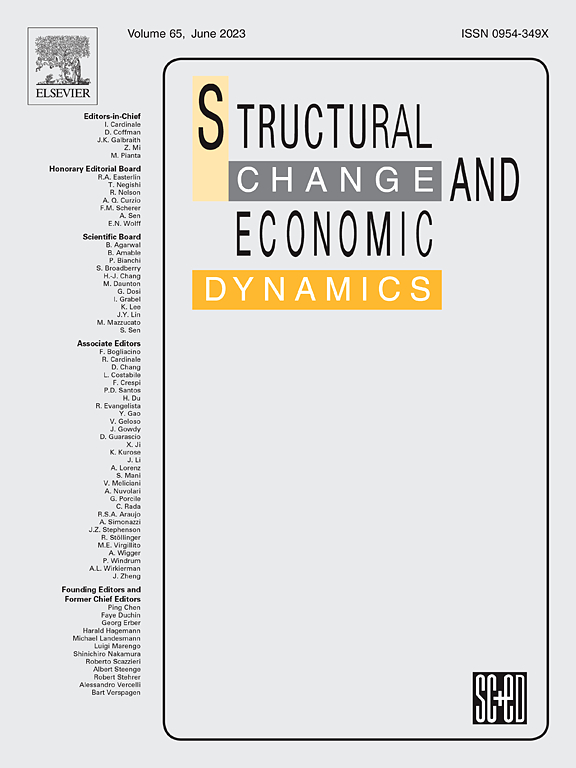Intermediate inputs in Dutch disease. Copper in Chile
IF 5
2区 经济学
Q1 ECONOMICS
引用次数: 0
Abstract
Purpose
By means of a practical model, the paper discusses the role of intermediate inputs in the ability of a booming extractive sector to draw resources out of lagging sectors, giving rise to Dutch disease.
Methods
The model is for the Chilean economy and follows an ‘extended’ input-output structure, with 35 production sectors. Once calibrated and parameterized, the model can be solved numerically to estimate the resource movement effect and the spending effect of a copper boom.
Findings
The numerical exercises show that, when the use of intermediate inputs is taken into account, the resource movement effect is of similar magnitude to the spending effect in explaining deindustrialization in Dutch disease. The key mechanism here is that, when the copper sector expands, its effects on real wages and good prices can be significant, due to the use of intermediate inputs.
Implication
This implies that the policies that are commonly recommended to avoid Dutch disease (fiscal rules, sovereign wealth funds, etc.) may not be very effective if they are not accompanied by others aimed at promoting greater provision or efficient use of scarce resources.
Originality
The present study contributes to the literature on Dutch disease in two ways. On the one hand, it provides an estimate of the resource movement effect and the spending effect of a commodity boom. On the other hand, it provides evidence in favour of the hypothesis that extractive activities can lead to direct deindustrialization.
求助全文
约1分钟内获得全文
求助全文
来源期刊

Structural Change and Economic Dynamics
ECONOMICS-
CiteScore
9.60
自引率
4.90%
发文量
159
期刊介绍:
Structural Change and Economic Dynamics publishes articles about theoretical, applied and methodological aspects of structural change in economic systems. The journal publishes work analysing dynamics and structural breaks in economic, technological, behavioural and institutional patterns.
 求助内容:
求助内容: 应助结果提醒方式:
应助结果提醒方式:


